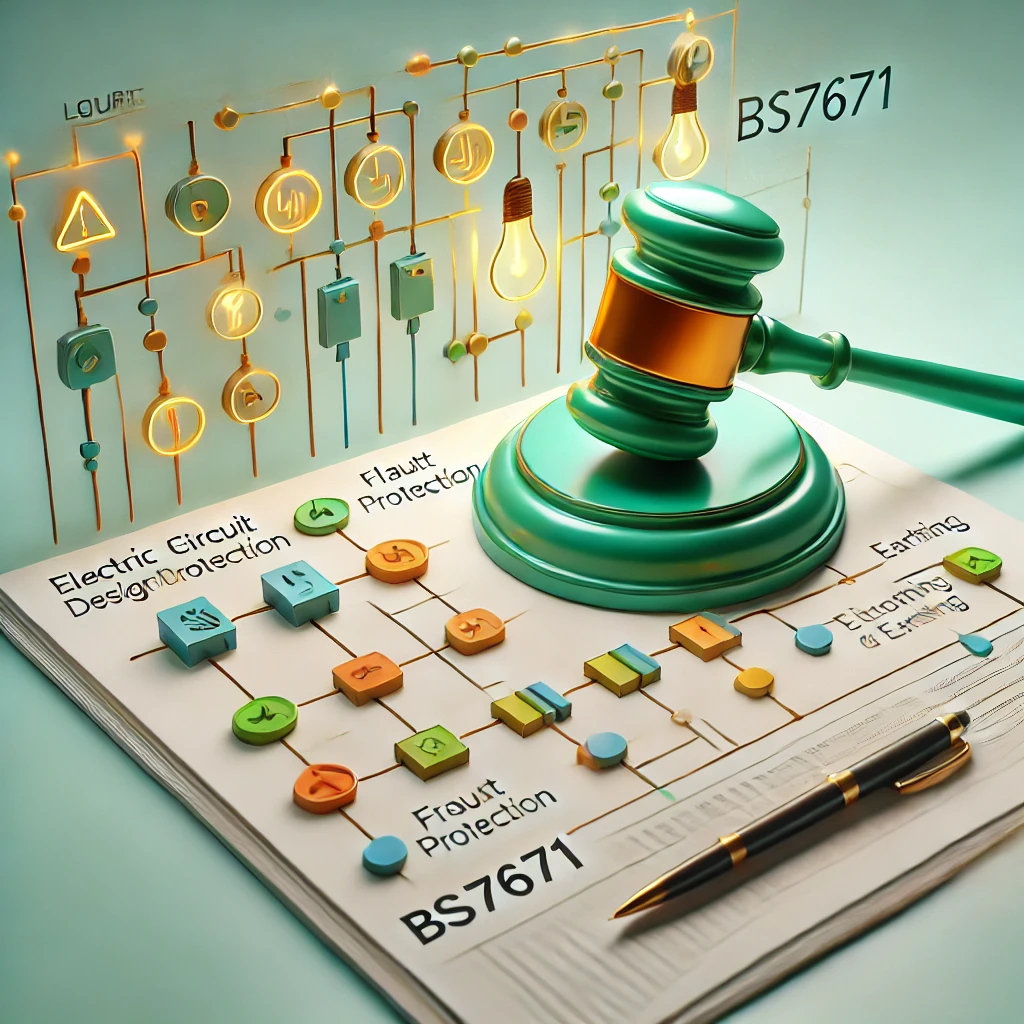What are the key protections required for persons and livestock in electrical installations?
According to BS 7671, Chapter 13 outlines the essential protections needed to prevent electrical shock to persons and livestock. These include both basic protection and fault protection, which address risks from contact with live parts or exposed-conductive-parts during faults.

OW London Electrician and Home Automation Engineers Team
Regulation 131.2 - Protection against Electric Shock
131.2.1 Basic Protection
- Persons and livestock shall be protected against dangers that may arise from contact with live parts of the installation.
- This protection can be achieved by one of the following methods:
- Preventing a current from passing through the body of any person or any livestock.
- Limiting the current which can pass through a body to a non-hazardous value.
131.2.2 Fault Protection
- Persons and livestock shall be protected against dangers that may arise from contact with exposed-conductive-parts during a fault.
- This protection can be achieved by one of the following methods:
- Preventing a current resulting from a fault, which can pass through a body, to a non-hazardous value.
- Limiting the duration of a current resulting from a fault, which can pass through a body, to a non-hazardous time period.
Regulation 131.3 - Protection Against Thermal Effects
131.3.1 General Requirements
- The electrical installation shall be arranged such that risk of ignition of flammable materials due to high temperature or electric arc is minimized during > normal operation of the electrical equipment.
- There shall be minimal risk of burns to persons or livestock.
131.3.2 Additional Protection
- Persons, livestock, and property shall be protected against harmful effects of heat or thermal radiation emitted by electrical equipment.
- Protection can be achieved by:
- Shielding or placing electrical equipment at sufficient distance from adjacent materials.
- Providing additional means of cooling if required.
Regulation 131.4 - Protection Against Overcurrent
- Persons, livestock, and property shall be protected against injury or damage due to overcurrents by appropriate devices.
- These devices include fuses, circuit breakers, or other protective measures which will limit or disconnect overcurrent.
Regulation 131.5 - Protection Against Fault Currents
- Persons, livestock, and property shall be protected against injury or damage resulting from fault currents.
- Suitable protective devices shall be used to limit these currents to a level which is unlikely to cause injury or damage.
Regulation 131.6 - Protection Against Voltage Disturbances and Electromagnetic Disturbances
131.6.1 Protection Against Voltage Disturbances
- Persons, livestock, and property shall be protected against injury and property damage as a consequence of overvoltage and any subsequent voltage recovery, in accordance with Section 445.
131.6.2 Lightning Protection
- Persons and livestock shall be protected against injury and property damage as a result of lightning strikes on the structure, or nearby lightning strikes.
Regulation 131.7 - Protection Against Power Supply Interruption
- Where danger or damage is expected to arise due to an interruption of supply, suitable provisions shall be made in the installation or installed equipment to ensure safety and continued functioning.

Frequently Asked Questions
Q: What are the basic protections against electric shock in an electrical installation?
A: Regulation 131.2.1 states that persons and livestock must be protected against dangers from live parts by either preventing current from passing through the body or limiting the current to a non-hazardous value.
Q: How can fault protection be provided according to the regulations?
A: Regulation 131.2.2 specifies that fault protection can be provided by limiting the current during a fault to a non-hazardous level or by limiting the time period during which the current can pass through a body.
Q: How can thermal effects in electrical installations be minimized?
A: Regulation 131.3 mandates that electrical installations be arranged to reduce the risk of ignition due to high temperatures or arcs and ensure minimal risk of burns to persons or livestock.
Q: What devices are required for overcurrent protection in an electrical installation?
A: Regulation 131.4 mentions that overcurrent protection can be achieved using appropriate devices like fuses and circuit breakers that will limit or disconnect the overcurrent to prevent injury or damage.
Q: How can lightning protection be provided according to BS 7671?
A: Regulation 131.6.2 indicates that lightning protection can be provided by ensuring protection against injury or damage from both direct and nearby lightning strikes to the structure.
Q: What is the difference between basic protection and fault protection?
A: Basic protection aims to prevent direct contact with live parts, whereas fault protection is concerned with protecting against indirect contact that may arise from a fault in the system. Basic protection prevents initial shocks, while fault protection limits risks from conductive parts becoming live due to a fault.
Q: How does overcurrent protection differ from fault protection?
A: Overcurrent protection, as per Regulation 131.4, is designed to protect against currents exceeding safe levels, while fault protection, covered in Regulation 131.2.2, aims to protect against indirect contact during a fault. Overcurrent protection prevents equipment damage and overheating, whereas fault protection prevents electric shock during fault conditions.
Q: What is the role of thermal protection in electrical installations?
A: Thermal protection, as defined in Regulation 131.3, minimizes the risk of ignition due to high temperatures or electric arcs. It ensures that electrical equipment operates without causing burns or fire hazards, whereas overcurrent protection focuses on disconnecting excessive current.
Q: How does lightning protection compare to fault protection?
A: Lightning protection, mentioned in Regulation 131.6.2, is intended to protect structures, persons, and livestock from injuries or damage caused by lightning strikes, while fault protection is designed to mitigate risks due to faults in the electrical installation itself. Both aim to reduce injury risk but address different sources of danger.
Q: What is the importance of protection against power supply interruption?
A: Protection against power supply interruption, covered in Regulation 131.7, ensures the safety and continued functioning of critical systems. Unlike overcurrent or fault protection, which prevents injury or damage from electrical faults, this protection focuses on maintaining essential operations during supply failures.
What users Saying
Discover what our customers think about our services. Their feedback reflects our commitment to delivering exceptional service and expert solutions for all electrical and security needs.

